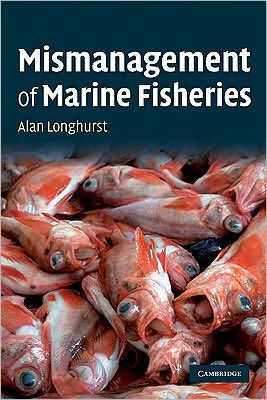Table of Contents
Preface ix
1 From certainty to doubt in fishery science 1
2 The ecological consequences of the exceptional fecundity of teleosts 16
The anomalous fecundity of teleosts 17
The ecological role of planktonic larvae 21
3 Indeterminate growth, negative senescence and longevity 34
Negative senescence: a consequence of indeterminate growth 35
BOFFs: growth trajectories, selective energy allocation and reproductive strategy 40
What happens if we curtail the duration of the reproductive period? 45
4 Marine ecosystems: their structure and simulation 56
Terrestrial ecosystems: no surplus production of biomass usable by industry 57
Trophic relations and energy flow in marine ecosystems 60
Characteristic structure and scale of marine habitats 64
Taxonomic characterisation of regional ecosystems 67
The undersampling problem and simulation of ecosystem functioning 69
5 The natural variability of fish populations and fisheries 79
The perhaps very distant forcing of fish populations 81
Regime shifts, changes of state or punctuated equilibria 89
Cyclical changes in the abundance of fish populations 97
A general consequence of ocean instability: recruitment variability 107
6 Has sustainability in fishing ever been achieved? 119
Ancient fishing and the destruction of pristine populations 120
The evolution of fisheries into the late mediæval period 125
Early fisheries of the Northwest Atlantic 130
Globalisation of industrial fishing: from Pushkins to rustbuckets 134
7 What is the real state of global fish populations? 155
Hilborn's great divide in fisheries sciences 157
What do we really know about the present state of global fish stocks? 161
Uncertainties arising from discards and from illegal, unregulated and unreported catches 169
How much confidence can we have in assessments of global stock depletion levels? 176
Consequences of the differential sensitivity of marine biota to fishing 188
8 The mechanics of population collapse 195
The morass of unreliable or incorrect stock assessment data 199
The tricky translation of scientific advice into management decision 203
Levels of national compliance with Treaties and Agreements 210
Slash-and-burn fishing: the extraordinary LRFF (Live Reef Food Fish) trade 216
Individual enterprise in ignoring regulations and in applying political pressure 218
9 Why don't some fish populations recover after depletion? 229
Depensation, predation and other obstacles to population recovery 234
On re-inventing nature and making new species 239
Broken ecosystems 247
10 Is the response of the fishery science community appropriate? 261
Optimism is the rule - but who calls the tune? 262
The new ecological imperative: paradigm shift or feeding frenzy? 265
The end of open-access fishing? 277
Marine protected areas: neither panacea nor red herring 282
11 Conclusion: sustainability can be achieved rarely and only under special conditions 291
A fishery for an ideal fish 296
A fishery with exceptional management 301
Index 315






